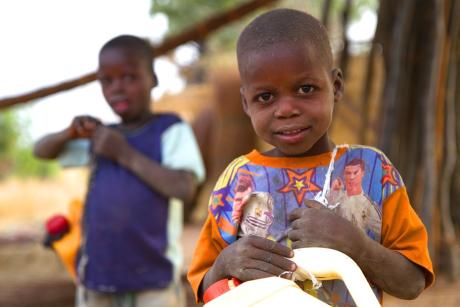
(from left) Molly Paley, Saumya Sao and Dr. Amy Finnegan at the International Conference on Family Planning in Kigali, Rwanda, in the fall of 2018.
Published June 25, 2019, last updated on June 3, 2020 under Voices of DGHI
This past year, I had the opportunity to work on a Bass Connections research team: Big Data for Reproductive Health (BD4RH). Bass Connections projects are interdisciplinary teams of undergraduate and graduate students, professors and researchers.
I became interested in reproductive health research after taking Dr. Megan Huchko’s global reproductive health course in the spring of 2017. It was through her course that I developed my understanding of and passion for reproductive health policy and gender equality.
The BD4RH team reflected my passion for reproductive health through the project’s commitment to reduce contraceptive discontinuation rates. The initial goals of our research were to create and disseminate data visualization tools that use reproductive health data from USAID’s Demographic and Health Surveys (DHS). The DHS collect data in more than 80 different countries, and the surveys’ contraceptive calendar tracks women’s month-by-month contraceptive use over a five-year period.
Our project began in the summer of 2018 when undergraduate student Saumya Sao and master’s student Melanie Wai created a pilot data visualization tool through Data+. Under the direction of Dr. Amy Finnegan, a research scholar at the Duke Global Health Institute, they coded four different data visualizations tools that make the DHS contraceptive calendar more accessible to users. By making the contraceptive calendar data more accessible, our Bass Connections team hopes researchers, Ministers of Health and advocates can leverage the information to ensure all women’s contraceptive needs are being met.
In the fall of 2018, I traveled with Saumya and project leaders Dr. Finnegan and Kelly Hunter, a public policy PhD student and global health doctoral scholar, to Kigali, Rwanda, for the International Conference on Family Planning to present a poster on two of the data visualization tools. While in Kigali, we had the opportunity to learn from researchers, advocates and politicians from around the world about global reproductive health research and advocacy.
Learning from experts on topics ranging from gender-based violence and family planning to the impact of the United States’ “global gag rule” exposed me to the many opportunities available to make a difference in the field of global reproductive health. The sheer number of people at the conference—all equally committed to advancing global reproductive health—continues to inspire me to pursue a career in reproductive health.
In the spring, team leaders Dr. Finnegan and Kelly Hunter and undergraduate students Nicole Rapfogel, Celia Mizelle, Saumya Sao, Daisy Fang and I traveled to Rockville, Maryland, to present our data visualization tool to researchers from the Demographic and Health Surveys team. Following our trip to Maryland, in April Dr. Finnegan presented the project at the Population Association of America annual conference in Austin, Texas.
Wrapping up our busy semester, our team won best poster out of all the research teams at the Bass Connections showcase in April. The recognition of our hard work meant so much to the team, and I feel extremely grateful to have learned from and worked with such incredible women throughout the year.
With the feedback we received at our presentations, students on next year’s BD4RH team will continue to refine the tools and disseminate them to a wider audience. Thank you, Bass Connections, and the Center for Global Reproductive Health for your support all year.
This post was originally published on the Center for Global Reproductive Health at Duke website and was republished with permission.


